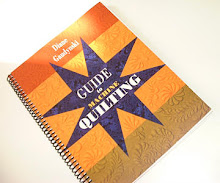
I fell in love with traditional quilts from the very first. Not orchestrated modern traditional ones where every fabric coordinates perfectly, but quilts that worked within the framework of traditional and showcased the maker’s artistic skills and joie de vivre.
I admired but was not really inspired by most quilts shown locally in the 70’s and 80’s. After going to many shows, I finally found ones that made my heart skip a beat when exhibits featuring quality vintage quilts began to appear, and I discovered books filled with quilts from other eras. These quilts really rocked. They had exuberance, color, design excitement, whimsy, simplicity and elegance, all more or less within the “rules” of quilting.
That is not an easy accomplishment for a quilter. Those “other” qualities can sometimes suffer because a quiltmaker is so intent on executing the technicalities properly, and perhaps resorting to using a traditional “scheme” for the quilt that they may take a backseat. The art of the quilt can suffer.
I never really made a planned quilt. They grew and developed as I worked even though I always started with a plan. Even the plan in my mind was subject to drastic change at any moment, but I never threw out the basics of the construction and style of a traditional quilt.
At first these changes were tentative and minor. It was still a log cabin with darks on one side of the red chimney square, and lights on the other, but the fabrics were not all from one line, or one scale of print, or even all prints or solids but a mix of whatever I thought looked great.
I used drab colors with sparks of bright. Mud colors and subtle palettes were my signature look. Later I used more saturated colors, but subtle and subdued will always be pleasing to me.
I tried to work keeping in mind the spirit of quilters from the past who had no quilt shops, no fabric budget, but had to make do. They used their ingenuity and creativity to make wonderful quilts that still delight the viewer.
Later I ventured out into the array of new fabrics available as quilting flourished worldwide, and decided that strict “repro” quilts were not my thing, just as doing cross stitch designs and following the color charts never worked for me either. New threads and quilting techniques, designs and free motion methods all have affected the outcome of my quilts. Growth is a good thing in quilting, and keeps traditional quilts vibrant and fresh, ever changing, ever new.
I liked to play with my own color combinations, drawing on old quilts that wowed me as inspiration and then playing with variations of the traditional. Quilting motifs began as a continuation of designs used for hundreds of years, but have now changed and grown and are individual to me. Their roots are firmly based in tradition.
I still behave, and play by the rules: straight lines are straight, corners are not lopped off, precision in workmanship is very important to me. But within the structure and framework of traditional I have found much room for creative expression.
I continue to like the feeling of a challenge met when corners meet properly, geometry works out, bindings go on well.
Traditional in my mind has morphed into “classic.” It is a style of quilting based on an accumulation of history, culture, style that has worked for centuries in the decorative arts. It will continue to work in this century and beyond, but will leave room for growth, for creativity, fun, personal viewpoint, and color and design exploration.
A traditional quilt is a challenging and many times difficult quilt to make. The rules are not easy. Technical skills sometimes take years to achieve. Errors are easy to spot and can bring down the entire project. A quilter choosing this format has tough standards, a demanding task, a brave and intrepid spirit.
The rewards are worth it though. A true traditional quilt or “classic” can be exhibited in an art gallery and hold its own with contemporary art. It will also look perfect on a bed. It would command a room in an historic house, yet be a dramatic focal point in a NY loft apartment, all function, steel, glass, chrome, and brick.
It transcends time. It would be at home in the past, present, or future.
A traditional quilt will never be a trend or a fad, but reflect current styles and popular textiles melded with the quiltmaker’s personal art, all within a time-honored and tested format.
A traditional quilt lasts.
In this day of "trend du jour" in quilting, do not apologize for being a traditionalist. Create quilts, be proud of them, and explore your own art in this amazing genre of quilting.
"Butternut Summer," above 1998, and "Shadows of Umbria," below, at Paducah, 2008, two of my favorite classics.
Keep quilting,
Diane
 Here is a better photo of my tote bag from Eleanor Levie's new book, www.eleanorlevie.com I marked the center design that is one of the digitized ones included on the new Bernina 830, and added freehand motifs areound it to fill the space. It is fun to start with something marked, and then add freehand images to that, takes some of the fear out of sitting down to blank space if you've never done that before.
Here is a better photo of my tote bag from Eleanor Levie's new book, www.eleanorlevie.com I marked the center design that is one of the digitized ones included on the new Bernina 830, and added freehand motifs areound it to fill the space. It is fun to start with something marked, and then add freehand images to that, takes some of the fear out of sitting down to blank space if you've never done that before.














